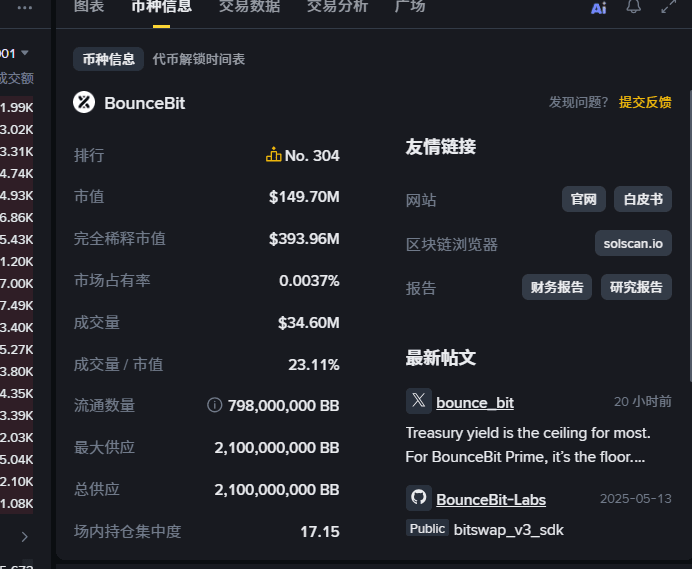Many people are still stuck in the mindset of 'buy low, sell high' when it comes to cryptocurrency, fixating on the candlestick charts to watch for rises and falls. They smile when they profit and curse when they lose, without truly understanding the core value of the projects. But BounceBit is different; it has taken the path of 'making money through real value', especially in the Prime sector, which also hides opportunities for ordinary people to tap into institutional returns. However, the RWA track is not without risks. Today, I’ll explain it in plain language to help you break out of the trading mindset and see the real opportunities and pitfalls!
Let’s first talk about BounceBit's 'core value' — it doesn’t rely on issuing tokens to drive up prices, but rather moves 'institution-level assets' onto the blockchain, allowing ordinary people to earn stable money too. Take its Prime platform, for instance, which collaborates directly with top global asset management firms like BlackRock and Franklin Templeton, turning real-world assets (RWA) like U.S. Treasuries and high-quality money market funds into tokenized products, such as BUIDL and BENJI.
In the past, investing in these institutional-grade assets required either a minimum investment of hundreds of thousands of yuan or a ton of paperwork and a trip to the bank, making them practically out of reach for the average person. But now, on Prime, you can purchase these tokens with USDC. After purchase, you don't have to monitor the market; the platform automatically applies Treasury bond interest and fund dividends to your balance. For example, if you buy BUIDL, you can earn a base yield of around 4% on US Treasury bonds while also automatically participating in low-risk on-chain arbitrage, for a combined annualized return of over 15%. Crucially, this income isn't "imaginary income" from token subsidies; it's cash flow from real assets, a stark contrast to profiting from cryptocurrency fluctuations. This is the true value of BounceBit: it helps you transform "cryptocurrency speculation" into "profiting from assets."
But don’t think that the RWA track is full of opportunities, you also need to pay attention to these pitfalls:
The first is the "watered-down" nature of the collaboration. Many projects now boast of "collaborating with a certain major institution," but many are merely "in name only," placing assets in institutional custody without actually developing a joint product. If the institution subsequently withdraws its investment or terminates the partnership, the underlying assets could become unstable. BounceBit is different. Its collaboration with BlackRock is a genuine product. For example, the corresponding fund code and profit distribution ratio can be found on the BUIDL. This isn't just a vague "verbal collaboration," and this is crucial to understand.
The second is regulatory risk. RWAs involve real-world assets, which falls squarely within a sensitive regulatory area. For example, if the US SEC suddenly tightens its rules on tokenized assets, or if such products are banned in your region, the platform might have to cease operations, leaving you uncertain about whether you can redeem your funds or receive your returns. Therefore, before investing, it's important to thoroughly investigate the platform's compliance credentials, such as whether BounceBit's custodian is licensed and whether there are publicly available regulatory filings.
The third issue is the "return expectation gap." Some users blindly invest in RWAs, believing they are "stable," and they believe they can consistently earn high returns. However, RWA returns also fluctuate with the market. For example, if US Treasury bond interest rates fall, the base return on BUIDLs will also decrease. If the arbitrage market is stagnant, the additional returns will also decrease. Don't harbor the illusion of "making high returns effortlessly." Consider return fluctuations rationally and invest according to your risk tolerance.
In short, when investing in BounceBit, stop focusing on the short-term fluctuations of $BB with a "cryptocurrency mindset" and instead focus on how it can connect you to real assets and earn stable returns. While the Prime sector does open the door to institutional-level wealth management for ordinary people, the regulatory and authenticity issues of the RWA sector should also be avoided. Remember: crypto investing isn't about betting on price fluctuations; finding projects with real value is the key to long-term profitability.
@BounceBit #BounceBitPrime $BB



